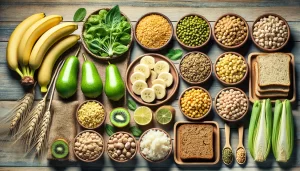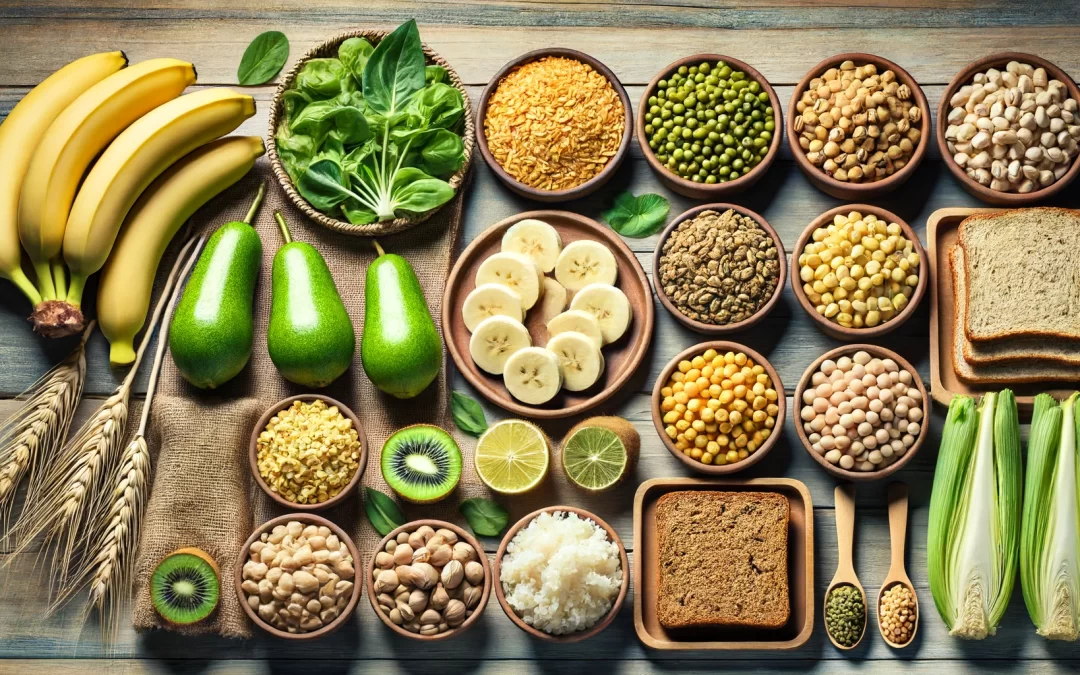Resistant starch is a type of carbohydrate that has gained significant attention in recent years due to its numerous health benefits. Unlike other starches, resistant starch is not easily digestible in the small intestine and instead ferments in the large intestine, acting as a prebiotic. In this post, we’ll explore what resistant starch is and how it can benefit your body.
What is Resistant Starch?
Resistant starch is a type of starch that resists digestion in the small intestine and reaches the large intestine intact. There are four main types of resistant starch:
- Type 1: Found in grains, seeds, and legumes, this type is physically inaccessible due to its outer protective layer.
- Type 2: Present in raw potatoes, green bananas, and high-amylose cornstarch, this type has a crystalline structure that makes it resistant to digestion.
- Type 3: Formed when certain starchy foods are cooked and cooled, such as potatoes, rice, and pasta.
- Type 4: Synthetic resistant starch created through chemical processing. Potato starch is an example.
 Benefits of Resistant Starch
Benefits of Resistant Starch
1. Improved Gut Health
Resistant starch acts as a prebiotic, fueling the beneficial bacteria in the gut. When resistant starch reaches the large intestine, it ferments and produces short-chain fatty acids (SCFAs), such as butyrate, propionate, and acetate. These SCFAs nourish the gut lining, reduce inflammation, and promote the growth of healthy gut bacteria, leading to a more balanced gut microbiome.
2. Enhanced Insulin Sensitivity
Consuming resistant starch can improve insulin sensitivity, crucial for maintaining healthy blood sugar levels. By slowing digestion and reducing the glycemic response, resistant starch helps regulate blood sugar and may lower the risk of developing type 2 diabetes.
3. Increased Satiety and Weight Management
Resistant starch can help you feel fuller for longer, reducing overall calorie intake and aiding in weight management. As resistant starch ferments in the large intestine, it releases compounds that signal feelings of fullness to the brain. This increased satiety can help prevent overeating and promote a healthy body weight.
4. Improved Colon Health
The SCFAs produced during the fermentation of resistant starch, particularly butyrate, play a crucial role in maintaining colon health. Butyrate acts as the primary energy source for the cells lining the colon, promoting their growth and repair. Additionally, butyrate has been shown to have anti-inflammatory and anti-carcinogenic properties, which may help reduce the risk of colon cancer.
5. Cardiovascular Health
Resistant starch may also improve cardiovascular health by lowering cholesterol levels and reducing the risk of heart disease. Some studies suggest that consuming resistant starch can decrease total and LDL (bad) cholesterol while increasing HDL (good) cholesterol.
 Resistant starch foods[/caption]
Resistant starch foods[/caption]
Incorporating Resistant Starch into Your Diet
To reap the benefits of resistant starch, aim to include the following foods in your diet:
– Cooked and cooled potatoes, rice, and pasta
– Green bananas
– Unripe fruits such as mangoes and papayas
– Legumes, such as lentils and chickpeas
– Whole grains, like oats and barley
– Potato starch
It’s important to note that gradually increasing your resistant starch intake is best to avoid digestive discomfort. As with any dietary change, consult a healthcare professional to determine the appropriate amount for your needs. Another important fact to remember is everybody’s body is different. Add some resistant starch to your meal and see how your body responds.
In conclusion, resistant starch is a valuable addition to a healthy diet, offering numerous benefits for gut health, insulin sensitivity, weight management, colon health, and cardiovascular health. By incorporating resistant starch-rich foods into your meals, you can support your body’s overall well-being and promote a thriving gut microbiome.



Recent Comments